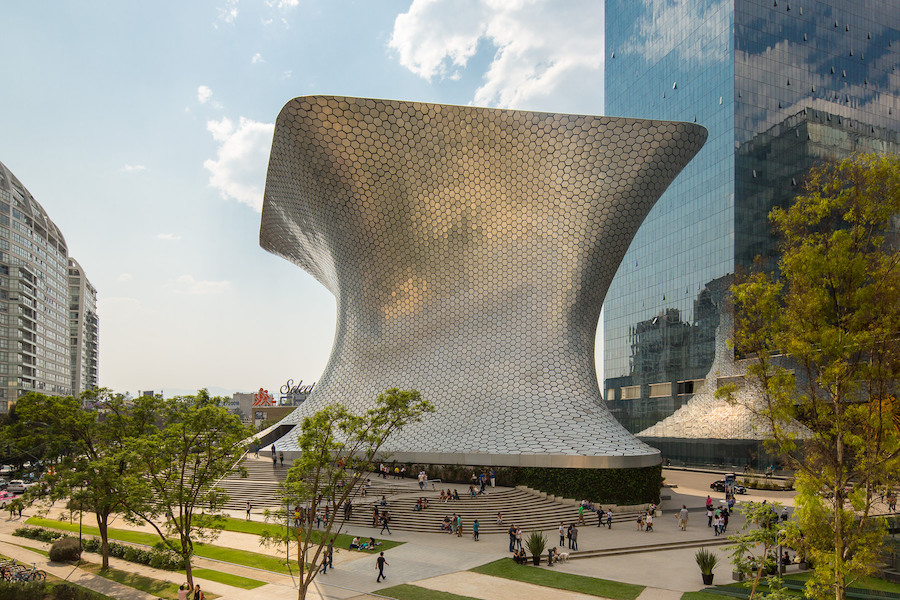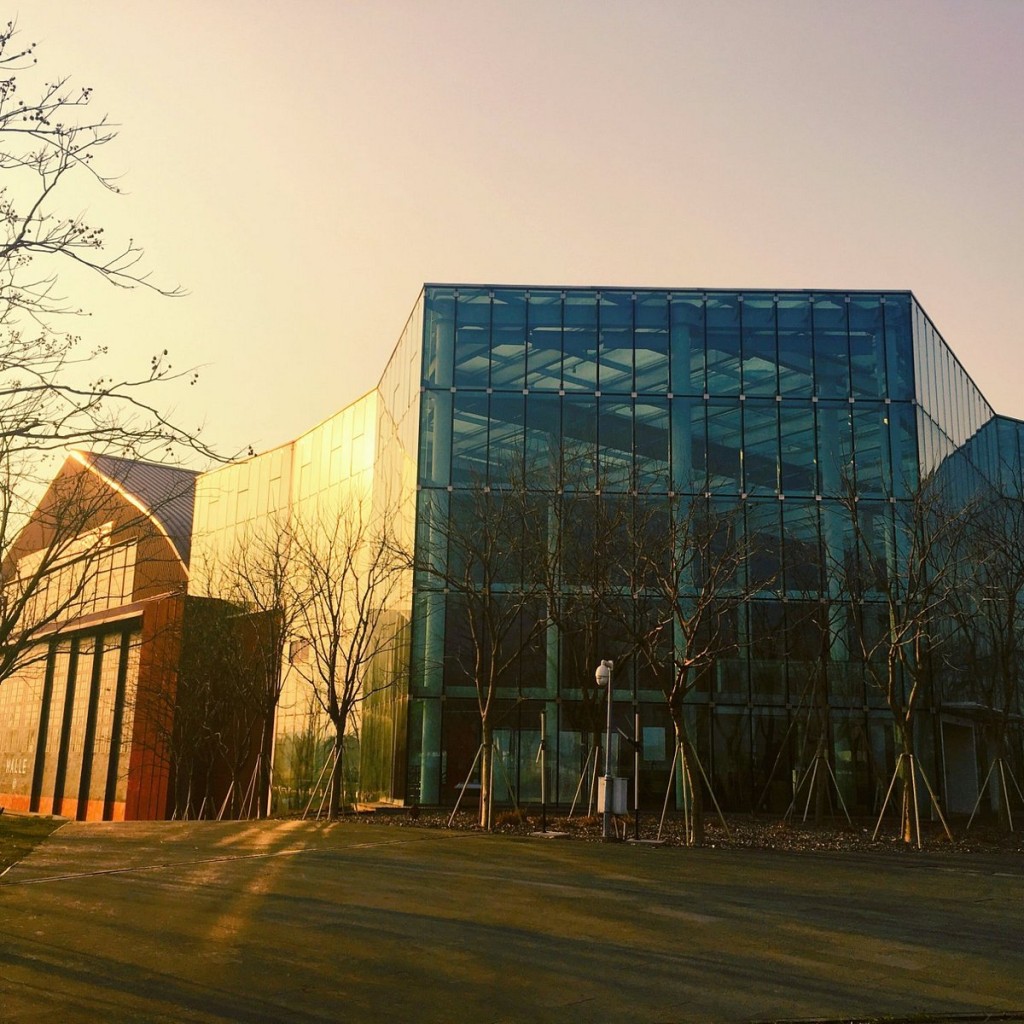Have you ever visited an amazing private art collection and found its architecture equally awe-inspiring? Nowadays, private art museums are playing a significant role and often fill the gap and enrich the multitude of perspectives in the local art scenes. Many art collectors have honored this mission by engaging with excellent architects to construct buildings or to re-imagine existing structure to best share their art collections with the public. Here LARRY’S LIST highlights some of the top architects of our time who are involved in this special part of the art collecting journey and amaze the audience with their remarkable ability to merge aesthetic and functionality.
Steven Holl
@stevenhollarchitects
Steven Holl leads with partners Steven Holl Architects, an architecture and urban design firm working globally from three locations: New York City, Rhinebeck and Beijing. Steven Holl Architects is recognized for the ability to shape space and light with great contextual sensitivity. With extensive experience in the arts, Steven Holl designed the Sifang Art Museum that hosts the private collection of Lu Xun. The galleries, located in illuminated glass tunnels and balanced high above the ground in Nanjing, China.

Tadao Ando
A leading contemporary architect in Japan, Tadao Ando was born in 1941 in Osaka, Japan. He is internationally best known for his minimalist concrete buildings. This self-educated architect learns architecture by an experientially-based approach that he has visited and studied all kinds of buildings. He considers light to be the architect’s base material. He demonstrates his masterful use of concrete structures in harmony with natural elements with these private art museums: He Art Museum (China), Bourse de Commerce (France), Palazzo Grassi (Italy), Punta della Dogana (Italy), Chichu Art Museum (Japan), Benesse House Museum (Japan), and Langen Foundation (Germany).

Frank Gehry
@frankgehry_official
Canadian-born American architect and designer Frank Gehry’s contemporary architectural style is unique and defies categorization. However, his style is perhaps best described as deconstructivist — marked by going against traditional structures. Many of his buildings have become world-renowned, iconic attractions, including some private museums, such as Guggenheim Museum Bilbao (Spain) and Guggenheim Abu Dhabi (United Arab Emirates), LUMAS Arles (France), and Louis Vuitton Foundation (France).
Jean Nouvel
@ateliersjeannouvel
The renowned French architect, an alumni of the École des Beaux-Arts in Paris, is said to be a conceptual architect, expressing his extravagant thought process in his design language.
Now in his late seventies, he and the Ateliers Jean Nouvel has won multiple architecture awards. They have designed a number of art museums, including the private museums TAG Art Museum (China), Leeum, Samsung Museum of Art (South Korea), and Cartier Foundation for Contemporary Art (France).

Thomas Heatherwick/ Heatherwick Studio
@officialheatherwickstudio
English designer Thomas Alexander Heatherwick founded the London-based design and architecture studio with a team of around 200 architects, designers and makers. Thomas Heatherwick has created South Africa’s biggest art museum, the Zeitz Museum of Contemporary Art Africa, by hollowing out the inside of a historic grain silo building —described by the British designer as “the world’s tubiest building”. The firm also designed the Fosun Foundation in Shanghai, which features a curtain-like facade of bronze tubes, inspired by traditional Chinese theatres.

The Bjarke Ingels Group (BIG)
@big_builds
Based in Cophenhagen and New York, BIG, founded by Bjarke Bundgaard Ingels, is a group of architects, designers and builders, involved in a large number of projects the fields of architecture, urbanism, research and development throughout Europe, North America, Asia and the Middle East. The Danish star architects BIG has built The Twist gallery for the Kistefos Collection in Norway owned by art collector Christen Sveaas. Cited as a “must-see” cultural destination, The Twist is literally a twisted sculptural form of architecture stretched over a river — a perfect merge of art form and functionality.
(Read related interview: He Has Made a ‘Twist’ in a Norwegian Wood)
Fernando Romero
@free_fernando_romero
Recognized as one of the leading architects of his generation, Fernando Romero, Hon. FAIA leads fr-ee, a global architecture firm with offices in New York, Mexico City, Madrid and Shenzhen. Fernando Romero built the Museo Soumaya in Mexico City in 2011 to house his father-in-law Carlos Slim Helus’ art collection, which includes more than 70,000 pieces of art. The outstanding form of the building, covered with 16,000 hexagonal aluminium plates, makes a lasting impression.
Fender Katsalidis Architects
@fenderkatsalidis
The Melbourne-based firm founded by Karl Fender and Nonda Katsalidis with the philosophy of innovation through collaboration. They nailed a $75 million renovation project for Tasmania’s Museum of Old and New Art, owned by art collector David Walsh. They are also the architects behind the Garangula Gallery near Canberra.

Querkraft
@querkraft.architekten
Founded in 1998 by Jakob Dunkl, Gerd Erhartt, Peter Sapp and Michael Zinner (partner until 2004), Vienna-based Querkraft is dedicated to designing adaptable structures that give people space and freedom as well as show authenticity, charisma and a strong identity. Museum Liaunig, that belongs to art collectors Eva and Herbert Liaunig, is such an example of that. The couple has been building their collection for over five decades, which consists around 4,000 contemporary Austrian artworks since 1945.
(Read related interview: Without a Gram of Fat)
Sou Fujimoto
@sou_fujimoto
Born in 1971, Japanese artchitect Sou Fujimoto established his own office Sou Fujimoto Architects in 2000. Noted for delicate light structures and permeable enclosures, Fujimoto was selected to design the temporary Serpentine Gallery pavilion in London in 2013. He also developed the Yuz Museum in Shanghai in collaboration with late Chinese-Indonesian collector Budi Tek. Retaining the original structure and appearance of an airplane hangar, the museum now includes trees and well-lit glass halls to allow for large-scale exhibitions. It is a perfect example of how to merge historical and contemporary architecture.
John Pawson
@johnpawson
John Ward Pawson CBE, RDI is a British architect whose work is known for its minimalist aesthetic. He has transformed a second-world-war telecommunication bunker into an art and furniture museum in Berlin for the Feuerle Collection. It is a private museum hosting the contemporary art, Imperial Chinese furniture, and ancient Southeast Asian art collections of art historian and collector Désiré Feuerle.
Jens Casper
@jenscasper
Jens has established a practice that focuses on reading, interpreting and intervening in the built environment, including cultural buildings and venues, exhibition spaces, interiors, and high-end residential projects, most of them implemented in listed environments.
Architect Jens Casper was commissioned by Christian Boros to convert a bunker from 1941 into an exhibition space to showcase the Boros Collection. On the rooftop of the bunker is a private penthouse for the collector couple Christian and Karen Boros.












